How Social Media Can Help Businesses Win Loyal Customers

How Social Media Can Help Businesses Win Loyal Customers
Social media gives people and brands a platform to connect and communicate, introducing new dimensions of accountability in the business-consumer relationship. Most people both follow and interact with brands on social media, and as a result, people are more likely to buy from brands they follow on social media, especially Facebook.
Social media ushered in a new industrial era marked by heightened expectations of transparency. Now, hundreds of thousands of people are ready to hold businesses accountable for their shortcomings via a storm of tweets and hashtags.
#DeleteUber appeared in approximately 220,000 tweets in a four-month span in 2017 after CEO Travis Kalanick chose to serve on U.S. President Donald Trump’s business advisory council.
#DeleteFacebook appeared in more than 400,000 tweets in a 30-day span in 2018 after the Cambridge Analytica scandal; and according to TalkWalker, #boycott appeared in approximately 187,100 conversations on Twitter alone in a one-week span in July 2019.
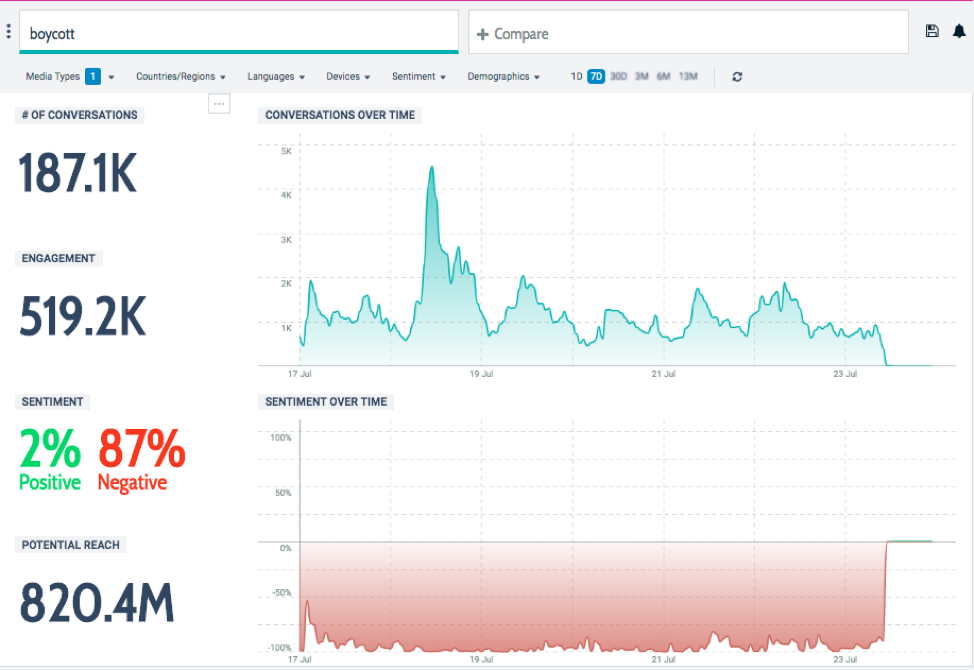
The transparency of social media has made it easy for consumers to hold businesses accountable and air their grievances.
These new dimensions of the business-consumer relationship, however, do not solely favor the consumer: Businesses that embrace values of transparency and accountability through their social media presence can establish trust with their followers and build long-lasting rapport.
The Manifest surveyed 537 social media users from across the U.S. to explore how they interact with brands on social media and how these interactions influence their buying decisions.
Businesses can use this report to understand how their social media interactions with consumers can boost brand awareness, build trust, and convert followers into loyal customers.
Our Findings
- People and brands can use social media to connect with each other; 74% of consumers follow brands on social media, and 96% of these consumers interact on social media with the brands they follow.
- People trust what they see on social media, and as a result, 67% have made a purchase after seeing an advertisement on social media.
- Women are more likely to base their buying decisions on something they see on Facebook, Instagram, and Pinterest, while YouTube and Twitter have more of an impact on men’s buying decisions.
- Younger generations spend more time on social media than older generations and are more likely to be persuaded by social media advertisements: Millennials (77%) are more likely to make a purchase after seeing an advertisement on social media than Generation Xers (69%) and baby boomers (48%).
- Despite the #DeleteFacebook movement, consumers are more likely to make a purchase from a brand they follow on Facebook (52%) than Instagram, YouTube, Pinterest, Twitter, LinkedIn, Snapchat, and Reddit combined (48%).
- Consumers interact with brands on social media in a variety of ways such as liking brands’ posts (51%), leaving reviews (31%), mentioning a brand on their own profile (22%), direct messaging a brand (20%), and tweeting at a brand (18%).
Use Social Media to Connect With Consumers and Other Businesses
The traditional communication barriers between people and brands no longer exist because of the internet, and social media offers a convenient avenue to get in touch with businesses.
For this reason, 74% of people follow brands on social media, and 96% of those who follow brands also interact with them on social media.
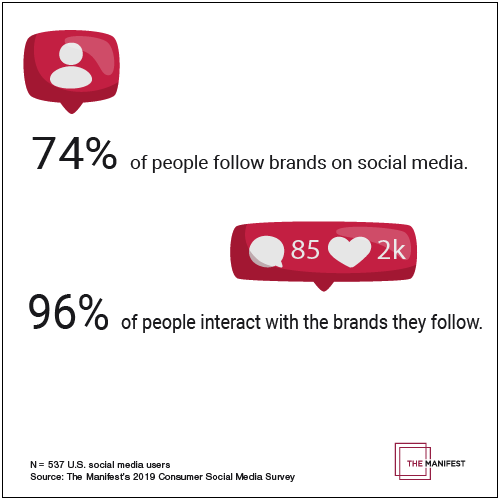
People can use social media to reach out to a brand with feedback, questions, and concerns and keep up with brands and new products or services.
Businesses can use social media to show more dimensions of their brand.
“Brands are no longer faceless monsters,” said Scott Levy, CEO of Fuel Online, an SEO and digital marketing agency. “There’s transparency and authenticity and a window behind the scenes. You get more of an idea of the brand’s culture and voice via social media.”
Brands are no longer faceless monsters. There’s transparency and authenticity and a window behind the scenes.
Both B2C and B2B businesses can gain immense reach because the majority of people follow brands on social media.
Jennifer Moxley is the founder of Sunshine Media Network, a digital media agency. She started an Instagram page in 2018 for her agency and has connected with B2B businesses as a result.
For example, she browsed @kerri.rosenthal’s wallpaper art on Instagram, and the next day, a promoted @kerri.rosenthal post appeared in her thread.

The promoted post appealed to Moxley, and she decided to browse @kerri.rosenthal’s products again.
“I clicked through to the website and made a purchase, which is on its way right now,” Moxley said. “This [promoted post] seemed to be a really smart way for a business to follow up with my interest.”
Moxley purchased wallpaper for her new office through a promoted Instagram post that accurately targeted her interests and intent.
Businesses can interact with consumers in different ways. Using promoted posts and targeted advertising can be a great way to convert followers to customers, but businesses shouldn’t underestimate the value of genuinely interacting with consumers.
Interact With People on Social Media to Establish Rapport
Consumers’ interactions with brands on social media add depth to business-consumer relationships and allow businesses to establish rapport and a sense of trust with consumers.
As a result of trust built through social media, 67% of people have made a purchase after seeing an advertisement on social media.

Social media allows consumers to glimpse unrevealed aspects of a business, such as its commitment to corporate social responsibility, work culture, and upcoming events, ultimately humanizing the brand.
“Social media makes people feel closer to a brand, and it makes people trust a brand,” Levy said. “It’s a direct line to show and display new items, ideas, and services without trying to shove it down anyone’s throat. The whole idea is not to use social media as a selling platform but to provide value to people.”
The whole idea is not to use social media as a selling platform but to provide value to people.
Although social media is a great platform to promote products and services, businesses should not use social media for advertising only. Instead, they should aim to add value to their followers.
For example, social media user and lifestyle blogger Becky Beach uses Twitter to interact with brands.
Beach interacted with a few brands when she was looking for a car in 2016, but her interactions with Carmax stood out the most.
“They asked what I was looking for and listened to me,” Beach said. “I exchanged several tweets with them. That weekend, I bought a 2013 Hyundai from them.”
Carmax connected with Beach, and instead of sending her an advertisement, the company listened to her preferences and gave her valuable tips.
Its Twitter account continued to engage with Beach even after she bought a car from Carmax, congratulating her on her new car.
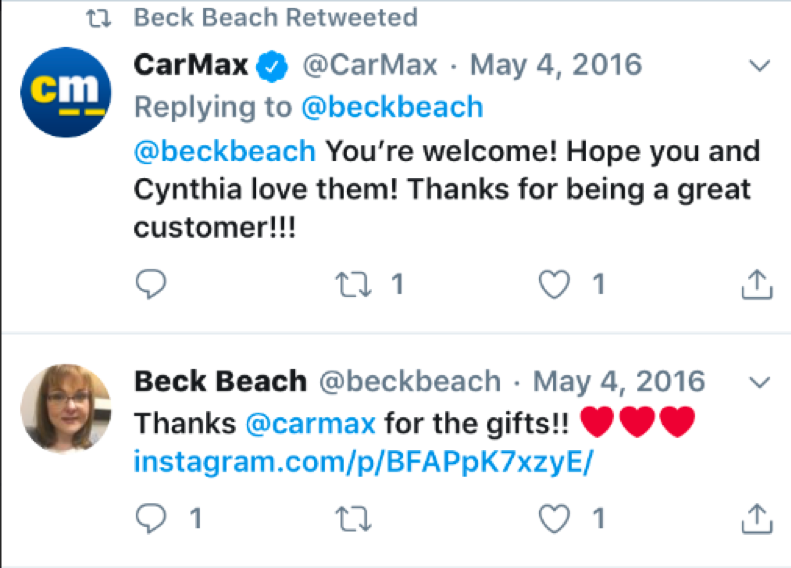
Carmax built trust with Beach through its social media interactions and made her more likely to purchase from Carmax again in the future, which she did in 2018. This highlights the impact social media can have on people’s buying decisions.
Using social media to promote brand awareness and advertise products works, but businesses need to make sure they are catering their content to their intended audience on the correct platform.
Know That Men and Women May Be Drawn to Different Platforms, but Don’t Base Your Whole Strategy on Generalizations
Gender plays a role in people’s social media habits and, by extension, their buying decisions that stem from social media interactions.
While Facebook, Instagram, and Pinterest are more likely to influence females’ buying decisions, YouTube and Twitter are more likely to influence males’ decisions to make a purchase.
Fifty-six percent of women (56%) are likely to make a purchase from an advertisement on Facebook compared to 45% of men; 17% of women are likely to make a purchase from Instagram compared to 12% of men; and 14% of women are likely to make a purchase from Pinterest compared to 3% of men.
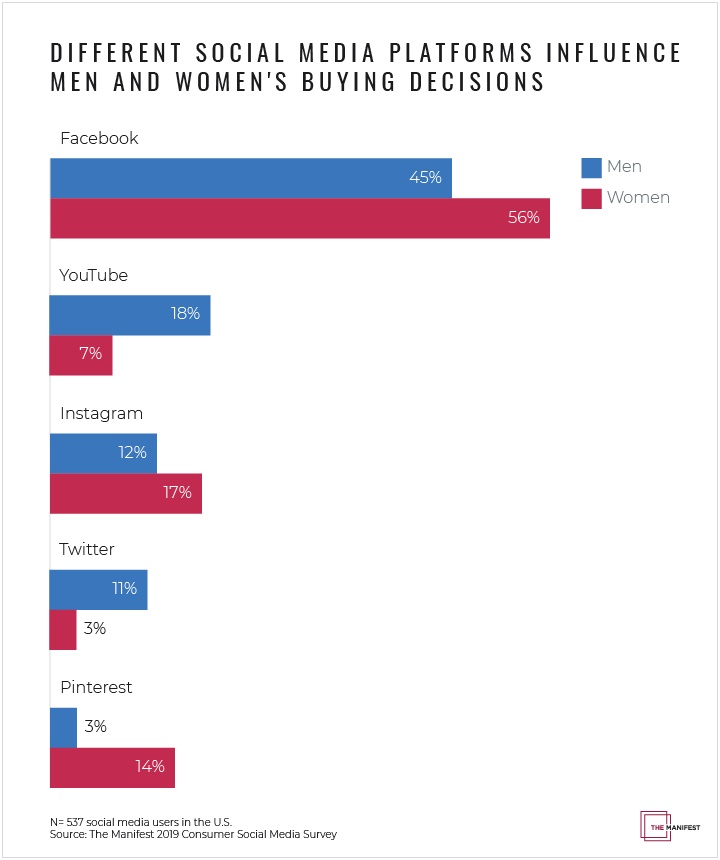
Conversely, 18% of men are likely to make a purchase from YouTube compared to 7% of women; and 11% of men are likely to make a purchase from Twitter compared to 3% of women.
Of course, these buying decisions always depend on the individuals, their social network preferences, and the types of products they are interested in buying.
Andrew Clark, a marketing strategist at Duckpin digital marketing agency and a frequent social media user, said that multiple social media platforms have influenced his buying decisions. He specifically mentioned YouTube and Instagram.
“For myself, as somebody who’s into video games, I turn to YouTube to watch playthroughs before I buy something,” Clark said.
Clark uses YouTube to research specific products such as video games before buying.
Clark watched playthroughs from well-known video gamers before purchasing Assassin’s Creed Odyssey, for example.
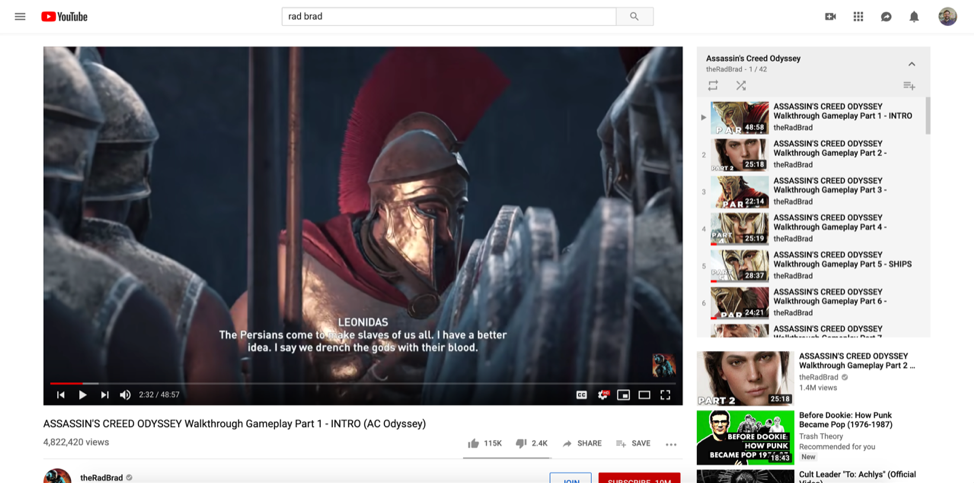
This ultimately led to Clark purchasing the video game.
However, Clark has also purchased products he’s seen on Instagram.
For example, he frequently saw advertisements for men’s fitness wear company Bearbottom Clothing and eventually looked at its Instagram profile.
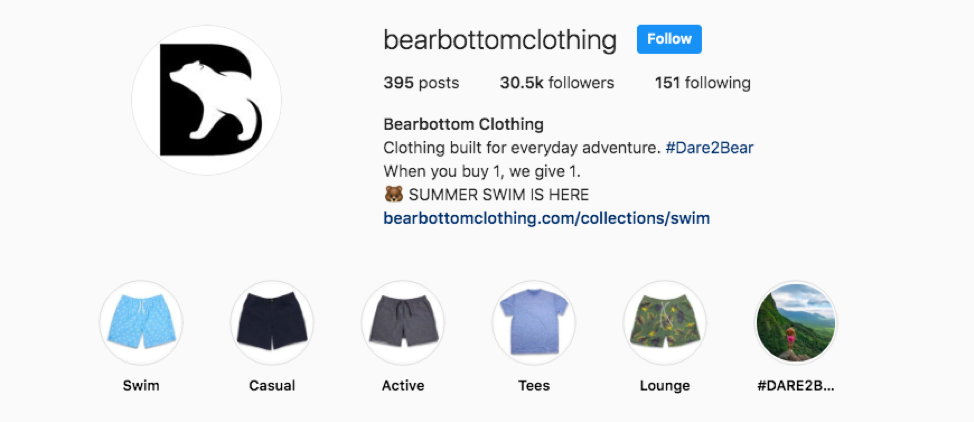
Clark was drawn to Bearbottom Clothing’s playful content that showcased real customers as opposed to carefully posed models like in many other Instagram advertisements. He was also intrigued by the company’s buy-1-give-1 approach: For every item the company sells, it gives a pair of shorts to the community that made it.
“After some back and forth about whether to buy or not, I bought a pair of their workout shorts and love them,” Clark said. “Arguably, their product is similar to their competitors, but their approach to social media won me over.”
Bearbottom Clothing’s approach to social media motivated Clark to buy.
Men are more likely than women to purchase something they’ve seen on YouTube, and women are more likely to purchase something they’ve seen on Instagram; however, this doesn’t mean that these platforms can appeal to either men or women. Sometimes, they can appeal to both.
In the case of Clark, his decisions to use YouTube to research video games and to buy athletic shorts from an Instagram post were more about the specific products and his intent to buy rather than the platforms.
Looking at demographics such as gender can help point businesses in the right direction with their social media strategy, but these guidelines should be viewed as suggestions, not rules.
Know What Ages Your Social Media Advertisements Will Influence the Most
Just as men and women have different social media habits and are drawn to different platforms, so too are different generations.
Millennials (ages 18-34) spend the most time on social media daily and access the most platforms weekly compared to Generation X (ages 35-54) and baby boomers (ages 55 and up). Therefore, it may not come as a surprise that social media holds more weight in millennials’ buying decisions.
More than three-fourths of millennials (77%) say they’re likely to make a purchase after seeing an advertisement on social media compared to 69% of Generation Xers and 48% of baby boomers.
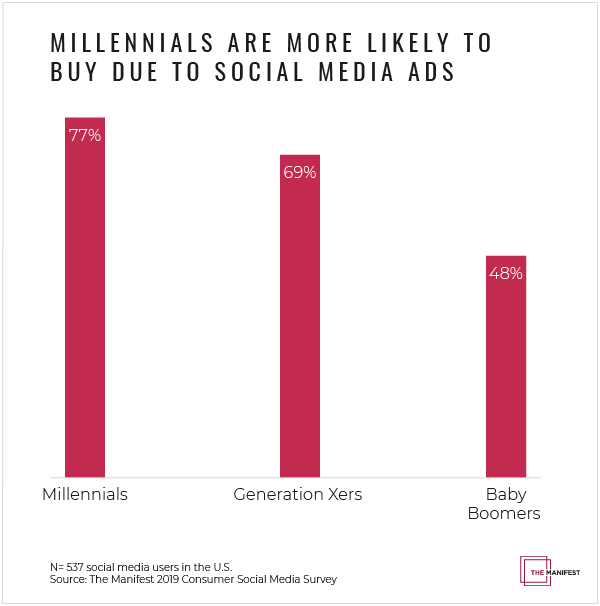
Social media advertisements are more likely to persuade millennials to purchase, which may be attributed to the rise of influencer marketing.
This doesn’t surprise millennial social media beauty and wellness influencer Lola Chél.
“When millennials first engaged with social media, it was just a way to talk and be social with others through a digital media platform,” Chél said. “For this very reason, any form of advertisement on social media seems a lot more organic and authentic, thus leading millennials to be more apt to make a purchase from an ad they see on a social media platform.”
Millennials see social media advertisements as more genuine than traditional advertising avenues and are the most likely to buy something from a social media ad.
The rise of influencer marketing illustrates millennials’ preference for authenticity when interacting with brands and seeing advertisements.
By connecting with influencers, brands connect with people who have large followings to share images of their products.
Chél typically connects with brands she already uses authentically, which makes it easier for her to promote their products to her nearly 40,000 Instagram followers. Sometimes, brands will reach out to her and send her products to try.
For example, Luster Pink sent her shea butter and coconut oil hair products.

Later, she purchased these products for herself because “they were just that good.”
Chél also said not even influencers are immune to the impact of social media advertising.
“As an influencer, I have definitely fallen for quite a few social media ads,” Chél said. “I even recently bought my current phone case because of a social media ad.”
Millennials value brands that present themselves authentically, and influencer marketing allows businesses to connect with consumers in a way that feels authentic to social media users.
Brands should think critically about the ways they present their brand on social media, whether through targeted ads, influencers, or everyday interactions.
Choose Your Social Media Platforms Carefully
Businesses should cater their social media content to their audience, as well as to the platforms people use.
Consumers are more likely to make a purchase from a brand they follow on Facebook (52%) than all other popular social media platforms combined.
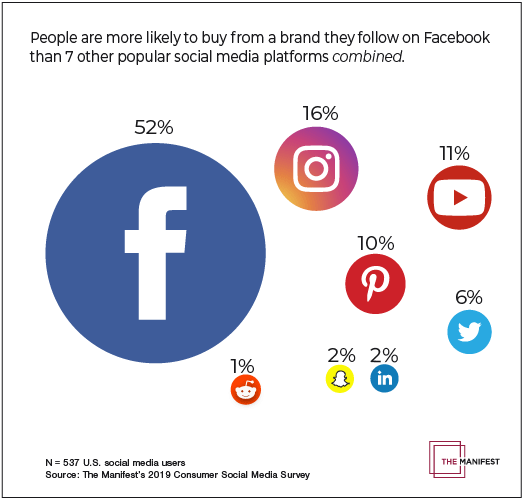
Fewer consumers are most likely to make a purchase from a brand they follow on Instagram (16%), YouTube (11%), Pinterest (10%), Twitter (6%), LinkedIn (2%), Snapchat (2%), or Reddit (1%).
Although Facebook’s domination of the social media realm may be the cause of this trend, customers at different stages of the conversion funnel might gravitate toward different platforms.
“Facebook is a legacy social media platform that many generations go to, and the formatting of posts probably attracts those with a higher intent to purchase because it tends to feature long-form content,” Clark said.
Although brands can provide clickable links in tweets and in their Instagram bio, Facebook tends to feature these links more prominently.
Heidi Fitzsimmons, blogger and founder of Rise Love Live blog, became interested in blogging through a targeted Facebook advertisement from the blog It’s a Lovely Life.
The sponsored post offered an email crash course in starting a “money-making blog.”

The content of the post felt inviting to Fitzsimmons, who cited the post’s clean design and the promise of a free course.
“Writing a blog had been on my bucket list for several years, and at the time this picture and [It’s a Lovely Life’s] pitch of a FREE 5-day crash course to start up a blog came across my feed, I had been unemployed for 3 months with no job in sight,” Fitzsimmons said. “I thought, ‘Why not?’”
From this interaction with It’s a Lovely Life blog, Fitzsimmons made the choice to enroll in the course and start her own blog.
Although the course itself was “free,” Fitzsimmons converted to an active participant in It’s a Lovely Life’s brand and has become an unofficial brand ambassador for the blog and its courses.
Fitzsimmons attributes this experience and her other shopping experiences through Facebook to Facebook’s targeting algorithm and said advertisements for products she is interested in seem to “magically pop-up.”
“Timing is everything,” Fitzsimmons said.
Although Facebook’s ad-targeting algorithm might be responsible for the high percentage of people who say they’re likely to buy from a brand they follow on the platform, it could also be that those with the most purchasing power gravitate toward Facebook as their platform of choice.
Younger generations are trending away from Facebook and toward more visually-driven platforms such as Instagram, Snapchat, and YouTube. As these younger generations gain more purchasing power, businesses might find these platforms yielding more conversions.
Embrace Social Media as a Tool for Two-Way Communication
People interact with brands in a variety of ways and expect brands to interact back.
Most consumers (51%) interact with brands on social media by liking the brands' posts.
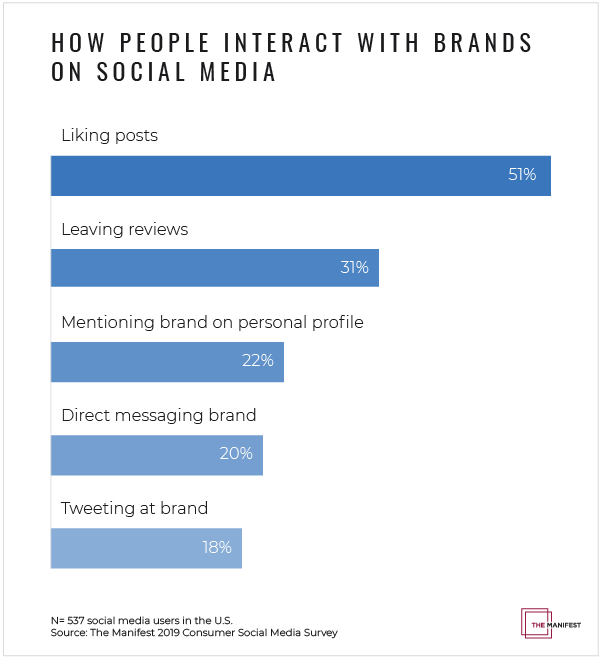
People also interact with brands by leaving reviews (31%), mentioning a brand on their own profile (22%), direct messaging a brand (20%), and tweeting at a brand (18%).
With most of these interactions, people expect a response, opening up the opportunity for businesses to use social media as an extension of their customer service strategy.
“As much as social media serves as a marketing tool, it also equally serves as a customer service tool,” said Melissa Orozco, CEO of Yulu Public Relations agency in New York City.
As much as social media serves as a marketing tool, it also equally serves as a customer service tool.
According to Brianna Davis, content management specialist at Best Company, which ranks B2C service providers, companies that interact with people through social media have a greater chance of converting followers to customers.
For example, Davis recently posted a positive review on social media of The Dyrt, a mobile app that helps campers find campsites.
Within two days, the company responded to her review and made it personal by referencing what she said in the post.
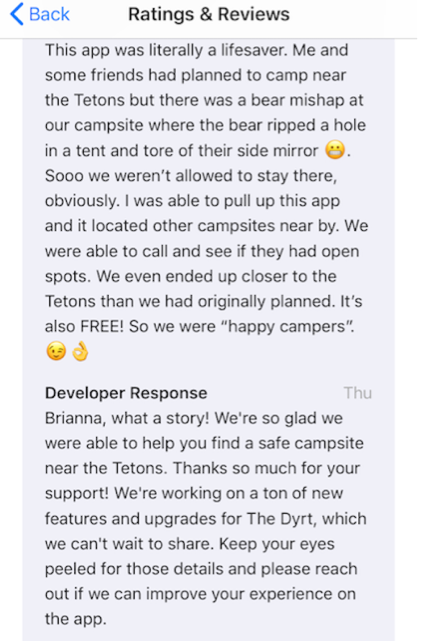
The Dyrt also welcomed any feedback she had on the app’s user experience.
“I currently use the free version, but with the positive response I received from the company, I have decided to buy the premium version,” Davis said.
This positive interaction with the company on social media motivated Davis to upgrade to the paid version of the app.
People view online interactions as they do in-person ones and value brands that interact with them on social media. Businesses open a door to their brand and instill in customers a sense of trust when they interact with people on social media.
People Want to Buy From Brands They Follow on Social Media
Social media presents both B2C and B2B businesses with the opportunity to connect with customers, and these social media interactions establish a foundation of trust.
Businesses can connect with customers on social media in a variety of ways such as through targeted ads, influencers, or authentic, personalized interactions.
A business’ social media strategy is successful if the business knows who its target audience is: Elements such as gender and age can influence how the business approaches social media and the platforms it chooses to cultivate its brands’ presence.
About the Survey
The Manifest surveyed 537 social media users in the U.S.
Most survey respondents were female (64%), and 36% were male.
About 42% of respondents are millennials (ages 18-34); 36% are Generation Xers (ages 35-54); and 22% are baby boomers and older (ages 55+).
